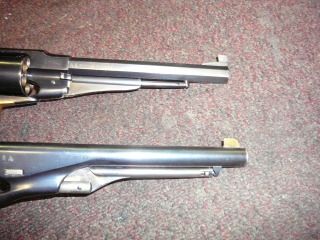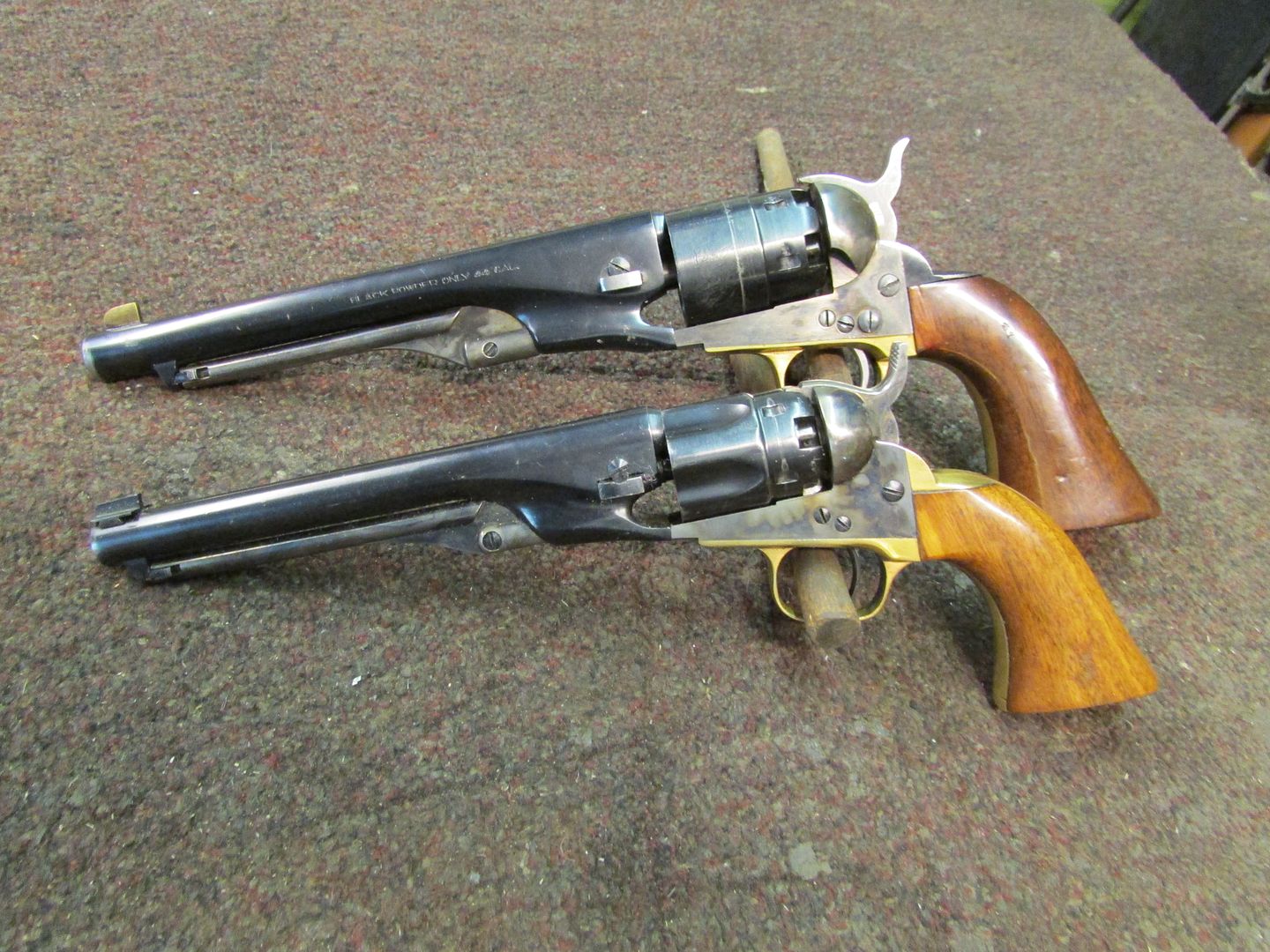NaturalPath
32 Cal.
- Joined
- Jun 7, 2016
- Messages
- 19
- Reaction score
- 0
Hello;
I think this might be my first post here so, hello everyone and, I'm probably going to post about something that has already been discussed before but, if so, I need a refresher course. :wink:
I just acquired a Manhattan Navy .36 5 shot series IV and, I found that, when I turn the gun sideways, to the left, at 90 degrees, the barrel wedge just slides out. Of course, it doesn't fall all the way out, because the screw stops it but, the barrel becomes loose. Holding the gun upright, I can push on the wedge and, it feels tight and, won't move. Just when I turn it to the left, and shake it, the wedge comes loose. This wedge doesn't have a spring on it, like the Colts seems to have. I checked and found that they were made like this so, it's not that the spring is missing, there just wasn't one. I found one supplier in the US that has slightly oversized wedges but, the wedge that is in it, is already very snug to push through so, I don't know if I could get an oversized wedge in there. I'm new to these cap and ball revolvers so, I haven't had any experience with these at all. Any ideas on a fix?
I think this might be my first post here so, hello everyone and, I'm probably going to post about something that has already been discussed before but, if so, I need a refresher course. :wink:
I just acquired a Manhattan Navy .36 5 shot series IV and, I found that, when I turn the gun sideways, to the left, at 90 degrees, the barrel wedge just slides out. Of course, it doesn't fall all the way out, because the screw stops it but, the barrel becomes loose. Holding the gun upright, I can push on the wedge and, it feels tight and, won't move. Just when I turn it to the left, and shake it, the wedge comes loose. This wedge doesn't have a spring on it, like the Colts seems to have. I checked and found that they were made like this so, it's not that the spring is missing, there just wasn't one. I found one supplier in the US that has slightly oversized wedges but, the wedge that is in it, is already very snug to push through so, I don't know if I could get an oversized wedge in there. I'm new to these cap and ball revolvers so, I haven't had any experience with these at all. Any ideas on a fix?







